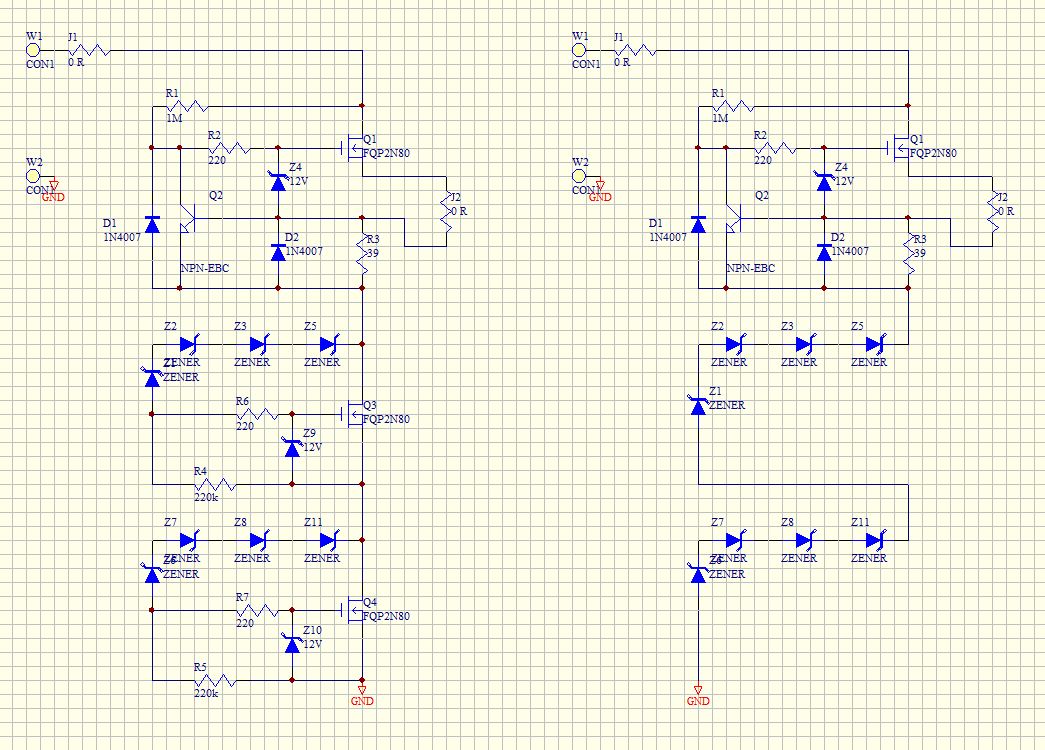OK, just checking. It gets much smaller with SMD, but I thought I'd ask.
Next: PCB style. I laid out both circuits on the same sized PCB, 2.8" x 1/8". The power density is the same, but of course one has just a bunch of 5W zeners, the other has a bunch of little zeners and two more MOSFETs. Here are pics of the two designs:


On the schematics, note that they differ only in that the three-MOSFET version has two more MOSFETS, two gate protection zeners and four more 1/4W resistors. It is technically possible to use one circuit board for both (i.e. the 3-MOSFET version) and install jumpers to convert.
The zener-only variant is to spread the heat from the power zeners out on the board.
Boards are missing any kind of mounting provisions, so until I put some mounting holes or such into them, they're suitable only for velcro mounting.
Forgot to mention: In spite of the allure to tube-amp guys of the few-zeners version, I consider it less reliable based on experience with power zeners. Zeners used at anything like their rated power and current are IMHO inherently unreliable. Adding the extra parts in the 3-MOSFET version does add other failure points, true, but it also adds a great deal of control, and that lets a designer foresee and cope with accidents.
Next: PCB style. I laid out both circuits on the same sized PCB, 2.8" x 1/8". The power density is the same, but of course one has just a bunch of 5W zeners, the other has a bunch of little zeners and two more MOSFETs. Here are pics of the two designs:
On the schematics, note that they differ only in that the three-MOSFET version has two more MOSFETS, two gate protection zeners and four more 1/4W resistors. It is technically possible to use one circuit board for both (i.e. the 3-MOSFET version) and install jumpers to convert.
The zener-only variant is to spread the heat from the power zeners out on the board.
Boards are missing any kind of mounting provisions, so until I put some mounting holes or such into them, they're suitable only for velcro mounting.
Forgot to mention: In spite of the allure to tube-amp guys of the few-zeners version, I consider it less reliable based on experience with power zeners. Zeners used at anything like their rated power and current are IMHO inherently unreliable. Adding the extra parts in the 3-MOSFET version does add other failure points, true, but it also adds a great deal of control, and that lets a designer foresee and cope with accidents.





Comment